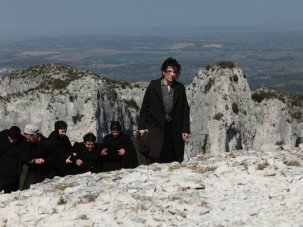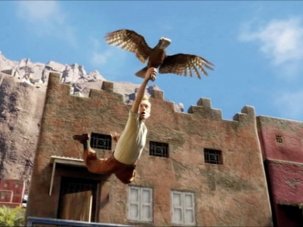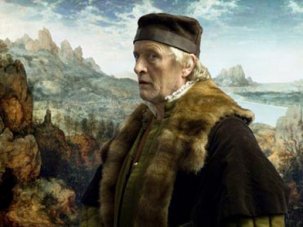from our November 2014 issue
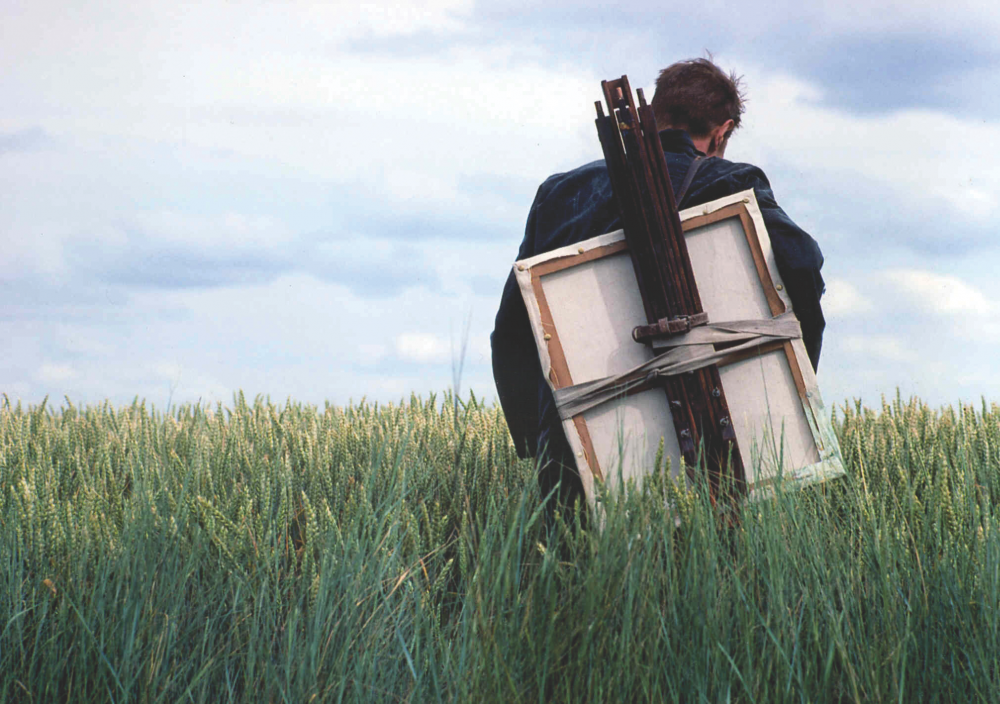
Van Gogh (1991)
The first thing that distinguishes Mike Leigh’s new biopic from its many predecessors is the cap-doffing honorific: Mr. Turner. Artist biopics often tend towards the surname-only approach, as if the subject was part of a brusque military roll-call: Basquiat (1996), Caravaggio (1986), Crumb (1994), Dalí (1991), Klimt (2005), Ligabue (1978), Modigliani (2004), Pirosmani (1969), Pollock (2000), Rembrandt (1936), Renoir (2012), Tatsumi (2011), Van Gogh (1991), Yumeji (1991).
If they’re female, however, the pendulum generally swings towards overfamiliarity: Artemisia (Gentileschi, 1997), Frida (Kahlo, 2002), Séraphine (de Senlis, 2008), The Passion of Marie (Krøyer, 2012), although Camille Claudel has managed her full name on two separate occasions (1988 and 2013, the latter as Camille Claudel 1915). We have been on first-name terms with Van Gogh twice (Vincent, 1987; Vincent & Theo, 1990), Nikifor Krynicki got the affectionately possessive My Nikifor (2004), and the original title for Andrei Rublev (1966) was The Passion According to Andrei, a title that could equally have referred to its director Andrei Tarkovsky.
Sometimes the name comes with additional adornments thrown in: Goya’s Ghosts (2006), Goya in Bordeaux (1999), Le Mystère Picasso (1956), Surviving Picasso (1996), Utamaro and His Five Women (1947) or the more substantial mouthful Love is the Devil: Study for a Portrait of Francis Bacon (1998).
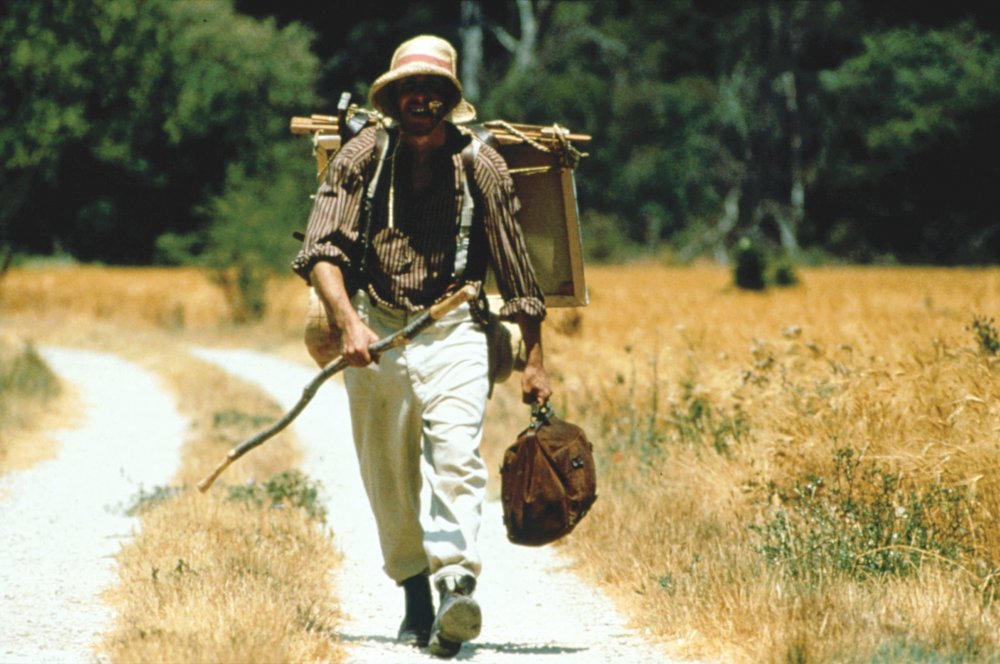
Vincent (1987)
As even that exclusively name-based list confirms, the upstart seventh art has long been fascinated by the lives and creative processes of practitioners of more traditional visual media. Painters appeared as dramatic protagonists in films dating back to the Victorian era: Georges Méliès, who once considered a career as a painter himself, was one of the first to see the potential of fusing and sometimes intermingling still and static imagery in A Tricky Painter’s Fate (1908), in which a mischievous artist tries to fool a train conductor into thinking that a railway carriage is full so that he can have it to himself. (Nearly a century later, Méliès would become a minor character in Raúl Ruiz’s Klimt.)
Films about actual painters were considerably rarer at this time, although footage survives of Pierre-Auguste Renoir (1841-1919) at work right at the end of his life. In general, the lack of sound and colour seems to have been an inhibiting factor, because the number of feature-length artist biopics prior to the 1950s is minuscule – as listed above, there’s Alexander Korda’s Rembrandt, with Charles Laughton giving a memorably earthy take on the Dutch master, and Mizoguchi Kenji’s Utamaro and His Five Women, about the 18th-century Japanese printmaker (its most indelibly erotic image being Utamaro painting directly on to the bare back of one of his models), while Albert Lewin’s The Moon and Sixpence (1942) was inspired by the life of Paul Gauguin if it was not directly about him. The latter’s final sequence was in Technicolor, graphically demonstrating what films about painters had lacked up to then – and when colour became a more regular commercial proposition, the number of artist biopics correspondingly grew.
John Huston’s Moulin Rouge (1952) was a heavily fictionalised but unprecedentedly colourful portrait of Henri de Toulouse-Lautrec (José Ferrer), which devoted much creative energy towards recreating late 19th-century Paris in a fashion inspired by the artist’s own paintings. By contrast, Vincente Minnelli’s Lust for Life (1956) turned out to be more factually accurate than the Irving Stone bestseller that inspired it (it tackles Van Gogh’s mental illness, but ignores the apocryphal ear-severing story) – and if both the film and Kirk Douglas’s characterisation of the artist tend towards the melodramatic at times, this is entirely in keeping with its subject’s intense canvases.
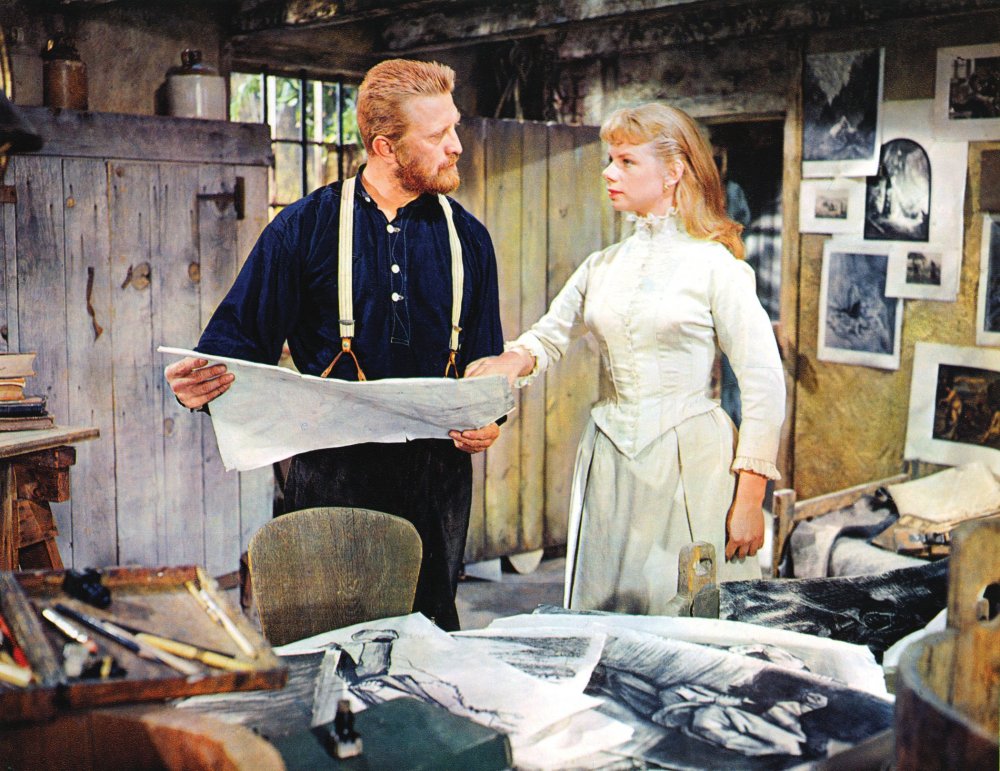
Lust for Life (1956)
Van Gogh may well be the artist most frequently depicted by major filmmakers. Alain Resnais and Maurice Pialat both made short documentaries called Van Gogh (in 1948 and 1965), Paul Cox’s feature-length Vincent (1987) had John Hurt reading Van Gogh’s own letters, and Andrew Hutton’s Van Gogh: Painted with Words (2010), starring Benedict Cumberbatch, fused documentary and drama. Martin Scorsese incongruously pops up as the painter in the middle of Akira Kurosawa’s Dreams (1990), which also brought his 1890 canvas Wheatfield with Crows to quasi-expressionist life; Robert Altman’s Vincent & Theo dramatises the turbulent relationship between the artist (Tim Roth) and his brother (Paul Rhys); while Pialat made another Van Gogh in 1991, this time devoting nearly three hours to the last three months of his life, with Jacques Dutronc in the title role.
More than 30 years earlier, Jacques Becker’s Les Amants de Montparnasse (1958) took a similar approach to the final days of Amedeo Modigliani (Gérard Philipe), although appreciation of the film has tended to be overshadowed by the spooky coincidence of Philipe dying shortly after its completion, at roughly the same age as Modigliani. Carol Reed’s The Agony and the Ecstasy (1965), also from an Irving Stone source, similarly focused on a comparatively short period of the life of Michelangelo Buonarroti (Charlton Heston): the painting of the Sistine Chapel ceiling under the critical eye of Pope Julius II (Rex Harrison) – in the process tackling the topic of artistic patronage and the surrounding politics in greater than usual depth.
Strict historical accuracy was impossible in the case of the medieval icon painter Andrei Rublev, since little is known about his life. So rather than speculate about the inspiration for his greatest works (shown in a final colour sequence), Tarkovsky preferred to dramatise a lengthy period of the artist’s creative silence. But it’s more a visceral portrait of the violence and cruelty of the Middle Ages than a study of Rublev’s art per se.
Unsurprisingly, several biopics have been made by filmmakers who themselves either started out as fine artists or pursued painting as a parallel career. Derek Jarman spent years trying to realise Caravaggio and ultimately had to make do with a comparatively tiny budget, but the impossibility of realising an Agony and the Ecstasy-scaled recreation of 17th-century Italy forced him to concoct more imaginative solutions, some of which were drawn from a keen knowledge of Caravaggio’s own paintings – for instance, the deliberate anachronisms (a typewriter here, a calculator there) paid tribute to the artist’s own penchant for adding then-contemporary details to ostensibly historical or Biblical subjects.
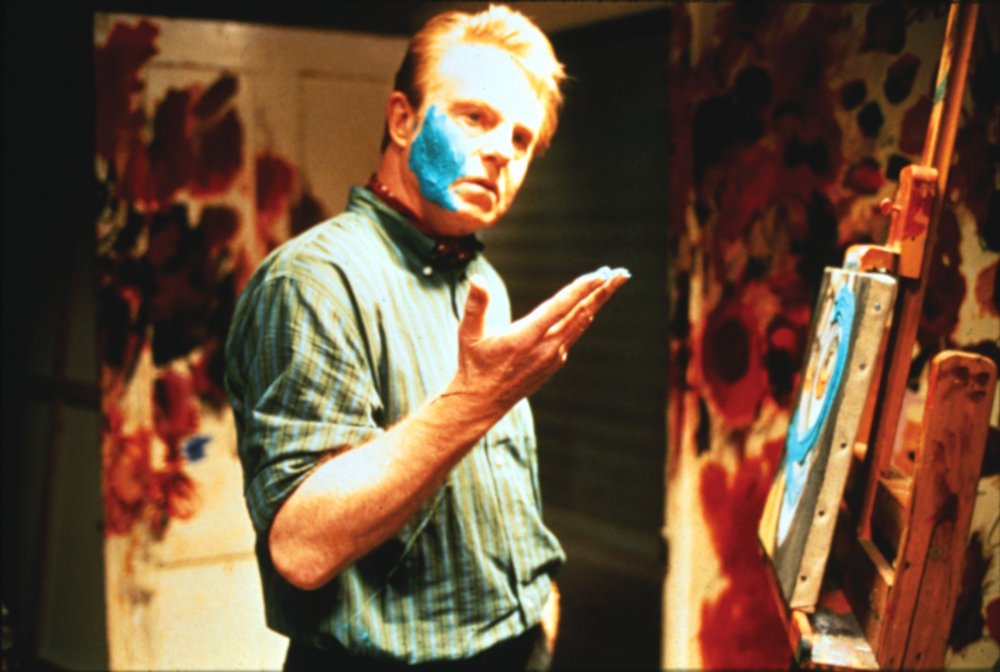
Love is the Devil (1998)
Former Jarman protégé John Maybury had more of a challenge with Love Is the Devil: although Derek Jacobi’s casting as Francis Bacon and the recreation of his social milieu (particularly Soho’s notorious Colony Room) couldn’t be faulted, the Bacon estate refused permission for the film to reproduce the original paintings. Undaunted, Maybury and cinematographer John Mathieson used specifically cinematic tricks (distorting lenses and filters) to create an impression of Bacon’s visual world.
Some films about painters focus on individual paintings, as the titles of Peter Greenaway’s Nightwatching (2007) and Lech Majewski’s The Mill and the Cross (2011) indicate. Both feature dramatised depictions of, respectively, Rembrandt (Martin Freeman) and Pieter Bruegel the Elder (Rutger Hauer), but the actual contents of their paintings The Night Watch and The Procession to Calvary provide most of the creative fuel – in Greenaway’s case through exploration of the notion that Rembrandt deliberately constructed a conspiracy theory within his painting (something explored further in a follow-up documentary from 2008, Rembrandt’s J’Accuse), and in Majewski’s through the highlighting of individual people featured in Bruegel’s teeming canvas.
Although previously a live-action filmmaker, Eric Khoo decided that animation was the most appropriate medium for Tatsumi, about the life and work of manga artist Tatsumi Yoshihiro, because it allowed a stylistically appropriate realisation of his grimly apocalyptic work.
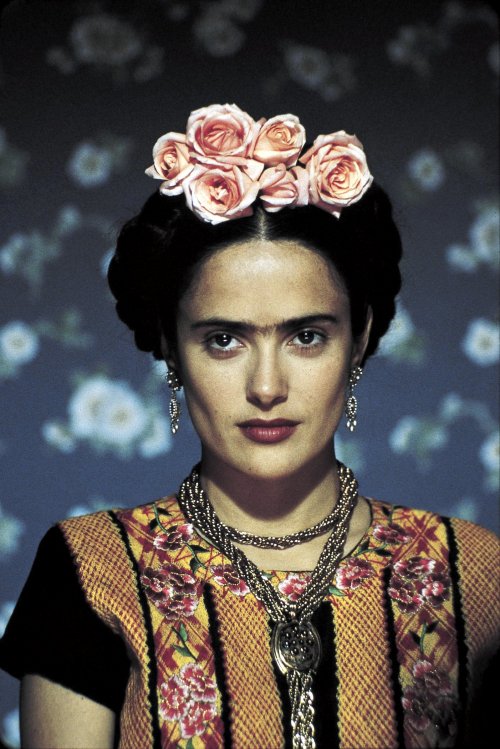
Salma Hayek as Frida (2002)
Some films were driven by stars – Pollock was a passion project for Ed Harris (who also directed) and Frida for Salma Hayek, physically obvious natural casting for Jackson Pollock and Frida Kahlo respectively. But other films have benefited from more surprising casting. Though hamstrung by being in black and white, which scarcely did justice to its subject’s paintings, Ken Russell’s BBC drama Always on Sunday (1965) cast painter James Lloyd as Henri Rousseau, with Lloyd’s strong Cheshire accent and palpable awkwardness in front of the camera vividly suggesting why the equally provincial Rousseau seemed out of place in the French art establishment (in this it foreshadows elements of Mr. Turner).
Similarly, Giorgi Shengelaya’s Pirosmani, about the Georgian painter Niko Pirosmanashvili, hired the artist Avto Varazi as both lead actor and art director. Even more adventurously, Krzysztof Krauze cast veteran actress Krystyna Feldman as Ukraine-born Polish-based Nikifor Krynicki. It would be impossible to guess without prior warning that a woman is under the facial stubble and toothbrush moustache: Nikifor’s quavering, high-pitched voice seems entirely appropriate.
Sculptors have generally had fewer biopics, although the two Camille Claudel films are exceptions: the first, by Bruno Nuytten and starring Isabelle Adjani, concentrates on her stormy relationship with Auguste Rodin (Gérard Depardieu), while Bruno Dumont’s take on events, with Juliette Binoche, concentrates on a period of intense psychological disturbance at the end of her creative career. Self-funded after Ken Russell realised it was the only way he was going to make it, Savage Messiah (1972) is an unusually restrained and thoughtful portrait of French sculptor Henri Gaudier-Brzeska, with sets designed by Derek Jarman.
There is not enough space to do full justice to legions of documentaries, but several deserve mention for innovative approaches. Edvard Munch (1974) develops and refines a technique that its director Peter Watkins pioneered in Culloden (1964), whereby actors playing Munch and his associates are interviewed as though they were taking part in a talking-heads documentary – an approach that, far from seeming gimmicky or dry, paints a far more contextualised picture of Munch’s cultural and social milieu than a conventional dramatisation might have achieved.
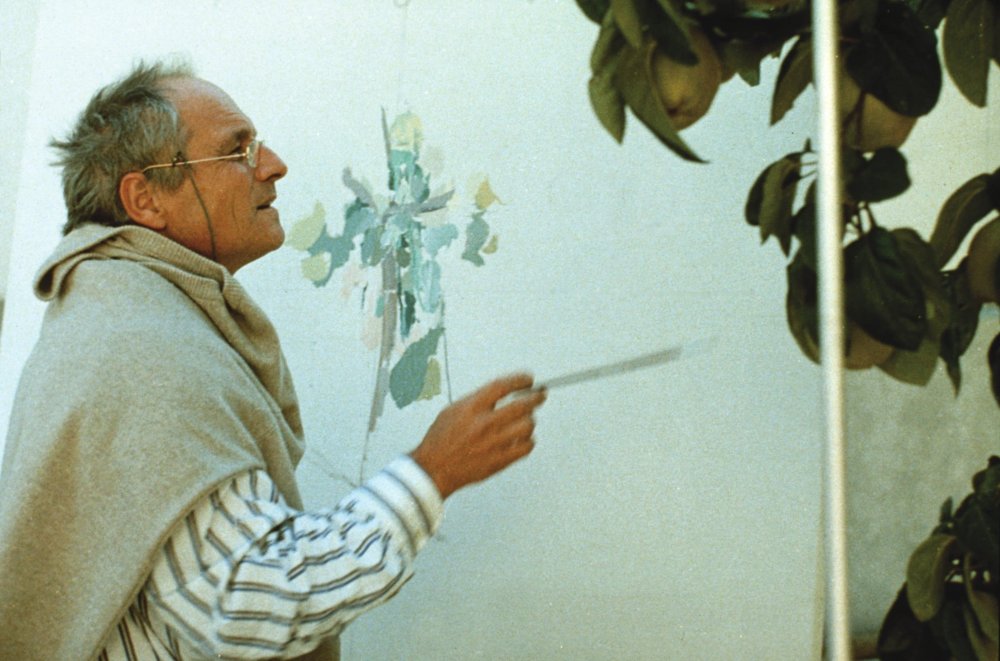
The Quince Tree Sun (1992)
The same year’s A Bigger Splash (1974) saw Jack Hazan controversially transforming what its subject David Hockney believed to be documentary reportage into a semi-fictionalised drama. An early breakthrough for Ken Russell was the wildly innovative Pop Goes the Easel (1962), which sought to create a visual equivalent of the then nascent pop-art movement. Henri-Georges Clouzot’s Le Mystère Picasso featured the artist painting on specially treated canvases, so that the viewer could see the paintings evolve without the artist himself getting in the way.
Most riveting of all, Victor Erice’s The Quince Tree Sun (1992) concentrates on four months in the life of realist painter Antonio López García as he tries – and frequently fails – to capture the effect of light reacting to the leaves and fruit of the quince tree in his garden. Since Erice shares his subject’s obsession with light, few other films capture a conscientious artist’s painstaking attention to detail to quite the same degree.
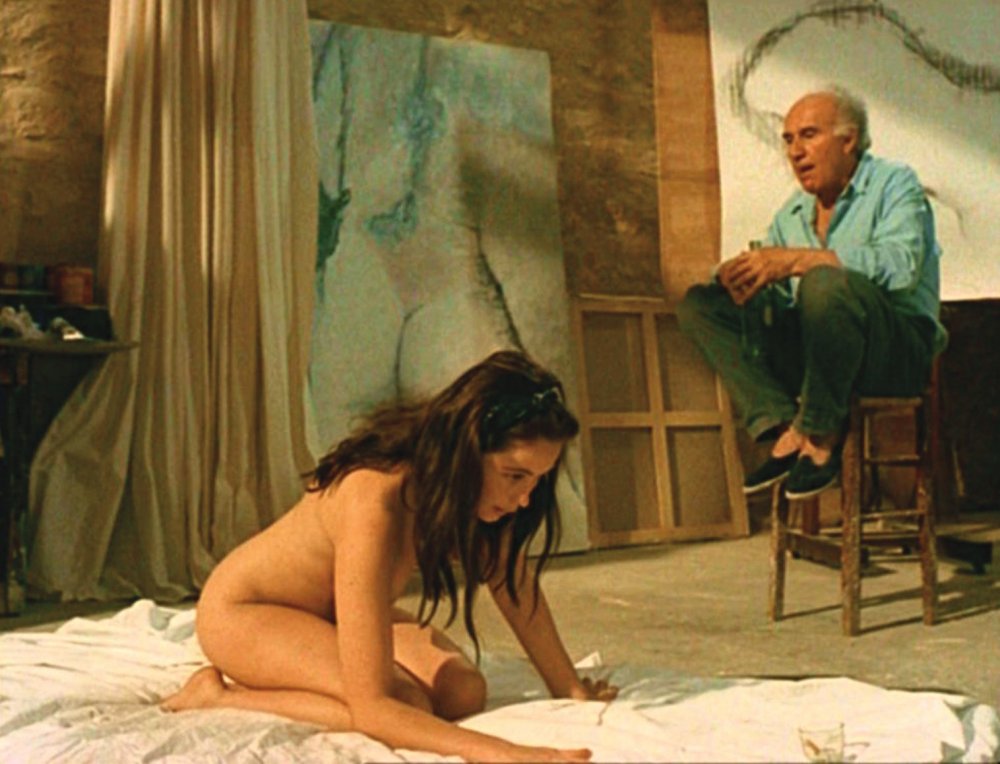
La Belle noiseuse (1991)
Fictional painters would seem out of place in a survey of this kind, but Martin Scorsese’s 40-minute Life Lessons (1989, part of the portmanteau film New York Stories) and Jacques Rivette’s four-hour La Belle Noiseuse (1991) showcase unusually convincing studies of artists both in the studio and outside it. Although played by Nick Nolte and Michel Piccoli, respectively, their brushwork was by established painters Chuck Connelly and Bernard Dufour, and the latter film in particular turns the age-old cliché of the relationship between painter and model (Emmanuelle Béart) repeatedly on its head. (Rivette’s much shorter alternative cut, Divertimento, doesn’t cover the process of artistic creation to anything like the same impassioned degree.)
Indeed, Rivette’s original film may be the most detailed study of a painter’s creative process yet attempted, partly because of the luxury of time denied the creators of more mainstream films, but also because he doesn’t have to worry about sticking to the facts. But as many of the titles mentioned above amply demonstrate, even drawing material from actual lives can make for rich and involving cinema. Mr. Turner is merely the latest in a long and distinguished tradition.
-
Sight & Sound: the November 2014 issue
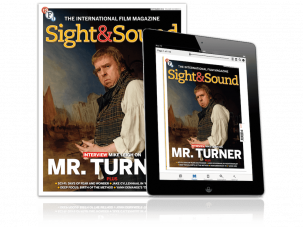
Mike Leigh gets Romantic, Darwinian sci-fi and the birth of the Method. Plus Nightcrawler, ’71, Gone Girl, The Knick, Venice and Toronto, agnès b,...
-
The Digital Edition and Archive quick link
Log in here to your digital edition and archive subscription, take a look at the packages on offer and buy a subscription.




